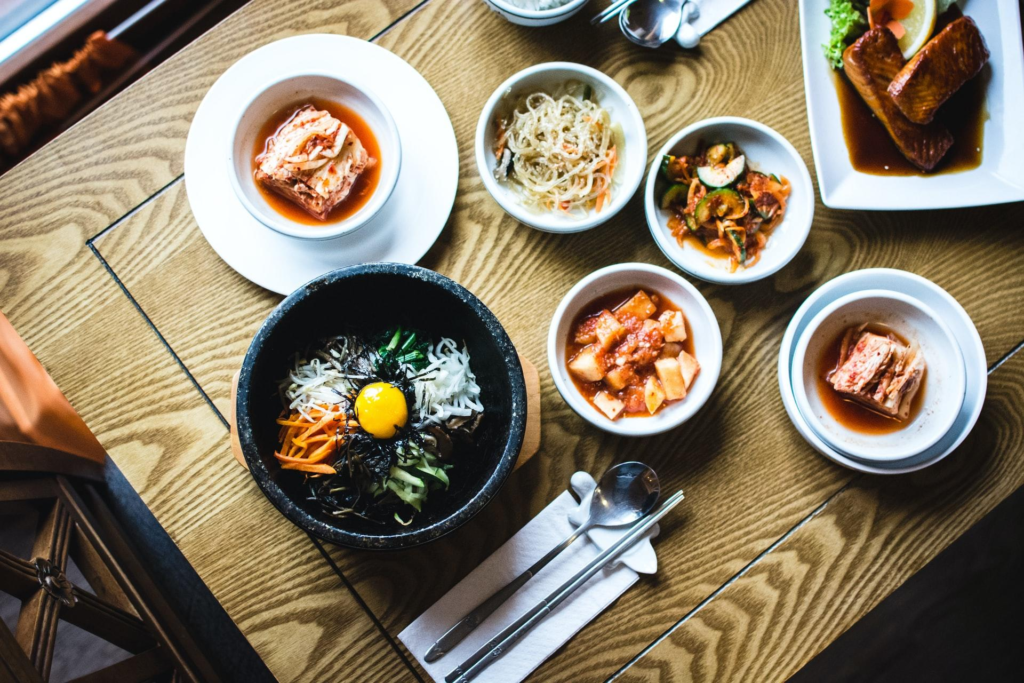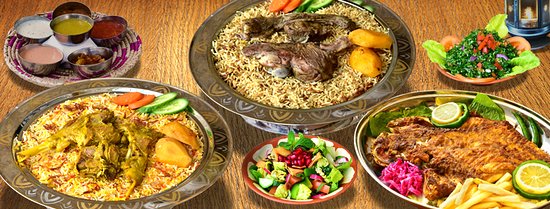Gulf Cuisine is going through an exciting transformation. What was once deeply rooted in traditional recipes and local ingredients is now being reshaped by global culinary influences. The Gulf countries — including the UAE, Saudi Arabia, Qatar, Bahrain, Kuwait, and Oman — are seeing a cultural food revolution. From fine dining to street food, Gulf Cuisine is now a blend of heritage and innovation.
This change is not just about taste but also about identity, experience, and how food tells stories from around the world.
What Makes Gulf Cuisine Unique?
Traditional Roots and Local Ingredients
Gulf Cuisine is rich in spices, rice, seafood, lamb, and dates. Dishes like machboos, harees, khuzi, and madrouba have been prepared for generations using traditional methods. The cuisine reflects Bedouin heritage, trade influences, and Islamic culinary traditions.
For centuries, meals have been centered around family and community, with flavors that reflect the desert, sea, and oasis life.
How Global Influences Are Entering Gulf Cuisine
Western and Asian Culinary Blends

With increasing tourism, foreign chefs, and expat populations, Gulf Cuisine is absorbing international ingredients and cooking styles. You can now find traditional dishes with a twist: sushi-madrouba rolls, truffle-harees, or spicy Korean machboos. Japanese, Italian, Indian, Korean, and Latin American flavors are all finding their way into menus across the Gulf.
Restaurants are experimenting with fusion dishes to attract global audiences while keeping local essence intact.
Impact of Fine Dining and Celebrity Chefs
Michelin-starred chefs and luxury hotel kitchens are bringing innovation to the Gulf. For example, in Dubai, restaurants like Zuma, Nobu, and Tresind are redefining the experience of Gulf Cuisine by mixing molecular gastronomy with regional flavors. Signature dishes now involve French techniques, imported ingredients, and high-end presentations.
These culinary experiments are not limited to luxury dining; even casual cafés are following the trend.
Cultural Shifts and Changing Food Habits
Younger Generation and Their Global Taste
Gulf youth are traveling more, watching international food content, and sharing food experiences on social media. As a result, their preferences are changing. They seek bold, global flavors but still appreciate their roots. This has led to the rise of hybrid recipes — like date tiramisu, quinoa tabbouleh, or pistachio burgers.

Social media platforms like TikTok and Instagram have further fueled this shift by promoting fusion cooking and global food trends.
Health Trends and Modern Lifestyles
The rise of health-conscious eating is also influencing Gulf Cuisine. Traditional dishes, known for being rich and heavy, are now being reimagined with superfoods, low-fat options, and plant-based alternatives. Vegan khuzi, grilled machboos, and low-carb harees are now popular in urban areas.
Restaurants and home chefs are adapting recipes for modern lifestyles without losing the soul of Gulf Cuisine.
Challenges to Preserving Traditional Gulf Cuisine
Fear of Losing Cultural Identity
As Gulf Cuisine becomes more international, some chefs and cultural advocates worry about losing its authenticity. They argue that while fusion is exciting, it should not overshadow centuries-old traditions. There’s a concern that younger generations may forget how to cook or even recognize original Gulf recipes.
Food historians and culinary schools in the region are now working to document and teach classic recipes to protect this cultural heritage.
Commercialization and Loss of Local Ingredients
Many restaurants are now importing ingredients instead of using local produce. This not only affects the authenticity of dishes but also puts pressure on local farmers and traditional food markets. Some chefs believe this global wave might lead to over-commercialization of Gulf Cuisine, reducing it to a trend rather than a tradition.
Sustainability and support for local agriculture are becoming important talking points in the regional food industry.
The Road Ahead for Gulf Cuisine
Striking a Balance Between Tradition and Innovation
The future of Gulf Cuisine lies in balance. Many chefs are now focusing on “modern heritage cuisine” — keeping traditional recipes but using modern presentation and healthier methods. Restaurants are collaborating with local communities and using storytelling to give context to each dish.
Events like the Dubai Food Festival, Qatar International Food Festival, and Saudi Feast Food Festival are promoting traditional Gulf dishes while welcoming international influences.
Technology and Culinary Innovation
Food-tech, AI in kitchens, 3D-printed meals, and cloud kitchens are also becoming part of Gulf Cuisine’s journey. With these innovations, Gulf food is reaching more people across the globe through digital menus, food delivery apps, and virtual cooking classes.
This technology-driven approach is helping Gulf chefs adapt faster and share their stories with a global audience.
Conclusion: Gulf Cuisine’s Global Future
Gulf Cuisine is not disappearing — it’s evolving. It is embracing the world while staying rooted in its unique identity. From five-star restaurants to home kitchens, the blend of traditional and international is creating a flavorful future.
The change in Gulf Cuisine is not just about what people eat, but also how they connect with their culture, the environment, and the world. In this evolving landscape, Gulf food continues to surprise, delight, and represent the region on a global table.
read more- Gulf’s Chefs, Food Influencers, and Restaurant Founders: 7 Powerful Stories You Must Read



